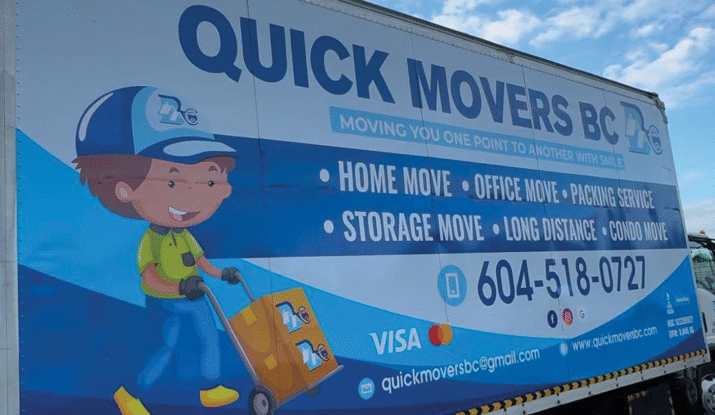Custom car decals are individual vinyl graphics applied selectively to specific regions of your vehicle. Imagine them as surgical enhancements: you insert your logo, a tagline, or a small illustration precisely where it will garner attention, such as windows, doors, or bumpers. The result is a polished, cohesive look that conveys your message without overwhelming the eye.
Financially, decals are lighter on the wallet. The material cost is lower since you’re using less vinyl, and the labor is typically quicker, meaning fewer installation hours. This makes decals particularly appealing for startups, event sponsors, or anyone who wants to refresh their vehicle without a hefty commitment.
Their versatility is another perk. You can swap out or add decals as your messaging evolves, making them a dynamic choice for campaigns that change seasonally or for personal tastes that shift over time. For example, a food truck could advertise a holiday special and then replace it with a summer promotion. This flexibility, however, comes with a caveat: the vehicle’s original color will still peek through the gaps, so the effect is best when the underlying paint is in good condition and the surrounding surface color complements the design.
Ultimately, custom car decals are a practical, cost-effective means to convey a clear, concise message while leaving room for future adjustments.
These graphics are available in a wide range of shapes, sizes, and finishes. You can select straightforward text decals that present your business name and phone number, or you may prefer intricate designs that integrate your logo and other graphics. Their primary benefit is positioning flexibility; you can apply the decals in the areas that draw the most attention and deliver the strongest message.
Advantages of Custom Decals
Economical option: Because decals use considerably less material and require less labor than full vehicle wraps, they present a financially savvy choice for budget-conscious clients. Most decal jobs remain priced at a small fraction of the cost of an entire wrap.
Rapid installation: Basic decal setups typically take less than an hour to complete, subject to size and design complexity. This minimizes vehicle downtime and accelerates your overall project timeline.
Simple updates: If business details evolve, updating is straightforward. Individual decals can be peeled off and replaced without disturbing the rest of the vehicle’s appearance. For businesses that frequently revise pricing, services, or contact information, this adaptability is especially useful.
Precise messaging: Decals empower you to position distinct information exactly where it gains maximum visibility. For instance, the logo might feature on the doors, the contact information can span the rear window, and a promotional call to action can sit prominently on the tailgate.
Drawbacks of Custom Decals
Limited coverage: Custom decals modify only selected areas of the vehicle, resulting in a subtler change than a complete wrap provides. For those desiring a striking, all-encompassing visual upgrade, a decal package may fall short of the intended impact.
Design constraints: When limited to individual decals, the designer must contend with the boundaries of each piece. Elaborate graphics that ideally span several panels risk appearing disjointed, which can dilute the intended visual effect.
Potential inconsistency: Variability in performance can affect the longevity of decals. If different batches of material, adhesives, or installation timing are introduced, the fading, peeling, or discoloration of individual decals can produce an uneven aesthetic over time.
Exploring Full Vehicle Wraps
A full vehicle wrap envelops nearly all of the painted surfaces in a continuous vinyl layer, converting the vehicle into an expansive canvas. This technique accommodates intricate graphics, complete photographic images, and uninterrupted lines that traverse from panel to panel without interruption.
Skilled installers remove components such as door handles and side mirrors to apply the vinyl without breaks, then reassemble the vehicle with meticulous attention. The end result showcases a flawless finish that commands attention wherever the vehicle travels.
Advantages of Full Wraps
Maximum visual impact: Few branding tools capture attention like a well-executed full vehicle wrap. The entire exterior transforms into a moving billboard that commands notice whether idling in a lot or traversing busy streets.
Complete design freedom: Full wraps enable large-scale artwork, intricate illustrations, and expansive photographic images that individual decals cannot accommodate. Designers can craft seamless transitions that cross panel seams and leverage complex color gradients without disruption.
Professional appearance: A meticulously applied full wrap can rival the depth and luster of custom paint. The unified finish conveys a polished, premium look that enhances the perception of both corporate and personal brands.
Paint protection: The vinyl layer guards the underlying paint from UV radiation, minor abrasions, and environmental contaminants. When professionally processed, the original finish beneath a removed wrap frequently exhibits less wear than unprotected surfaces.
Better ROI for high-mileage vehicles: Fleet vehicles, tradeshow trailers, or personal cars that log heavy mileage benefit from the full wrap’s visibility. The greater reach often offsets the initial expense more quickly than smaller, static graphics.
Disadvantages of Full Wraps
Higher upfront cost: The comprehensive material coverage, extended design labor, and intensive installation required for a full wrap elevate the initial budget. This financial hurdle is more pronounced for larger vehicle categories, such as vans and buses, compared to partial solutions.
Installation timeline: Professional application of a full vehicle wrap usually spans two to five days, contingent upon the vehicle’s dimensions and the intricacy of the design. Consequently, your vehicle will be out of service for that entire duration.
Ongoing upkeep: To preserve its visual integrity, a full wrap demands scheduled cleaning and gentle care. If a specific area is compromised, a panel replacement is often mandated, as spot repairs seldom yield seamless results.
Removal implications: The process of removing a full wrap must be conducted by trained personnel, and the associated labor charges can be considerable, particularly if you wish to update the design or liquidate the vehicle.
Guidance for your choice
The determination between custom decals and full wraps should be informed by several critical variables.
Financial frame: Begin with a candid evaluation of your budgetary constraints. Custom decals vary from $100 to $800, driven by dimensional and design intricacies. Full wraps, by contrast, generally fall between $2,000 and $5,000, with premium offerings for larger models pushing totals even higher.
Be mindful of not merely the immediate outlay but the value accrued over time. If the intention is to sustain the graphics for multiple years, calculating the annual cost of visibility may favor the full wrap.
Operating context: The contexts in which you drive the vehicle exert a profound influence. Commuters traversing congested highways will derive substantial visibility from a full wrap, whereas a vehicle that serves a localized delivery function might fulfill its marketing objectives with thoughtfully placed decals.
Urban settings characterized by bustling pedestrian traffic tend to respond favorably to vibrant, all-over vehicle wraps, whereas rural locales generally engage more effectively with concise, transparent messaging delivered by understated decals.
Business Goals
Your broader marketing aims should guide the choice. Strategies focused on brand imprinting gain traction with full wraps, which command attention and cultivate lasting recall. Conversely, campaigns driven by measurable consumer action may perform more effectively with decals that foreground phone numbers and web addresses. Startups often elect decals to validate messaging and gauge market appetite before committing to the resource-intensive full wrap. Mature brands, on the other hand, may opt for full coverage to project a cohesive and authoritative market presence.
Timeline Requirements
When deadlines tighten, custom decals usually prevail, as they allow for streamlined design, expedited production, and rapid deployment. In contrast, complete wraps demand longer lead times, requiring meticulous coordination and scheduling.
Finding the Right Balance
Some vehicle operators find that a mixed strategy yields optimal results. Essential business identifiers can be rendered in durable decals, supplemented by strategically placed wrap segments that deliver visual punch. This model affords greater creative latitude than decals can alone, yet usually costs less than a full wrap. Another prudent approach is to begin with custom decals, leveraging the insights gained to transition to a full wrap when business expansion or shifting graphic requirements warrant the investment.
Next Steps
Deciding whether to go with custom decals or a complete wrap should hinge on your distinct objectives, financing parameters, and the image you wish to project. Custom decals are ideal for messaging precision and budget efficiency, while full wraps offer expansive design latitude and eye-catching continuity.
Carefully chart your goals, examine financing limits, and seek guidance from experienced installers. They can present tangible samples of each alternative. Ultimately, select the choice that harmonizes with your enduring strategy and maximizes return on the capital you are prepared to allocate.
Obsessed with reimagining your ride? Request estimates for both paths—your budget may stretch further than anticipated while still delivering greater impact than you envisioned.

